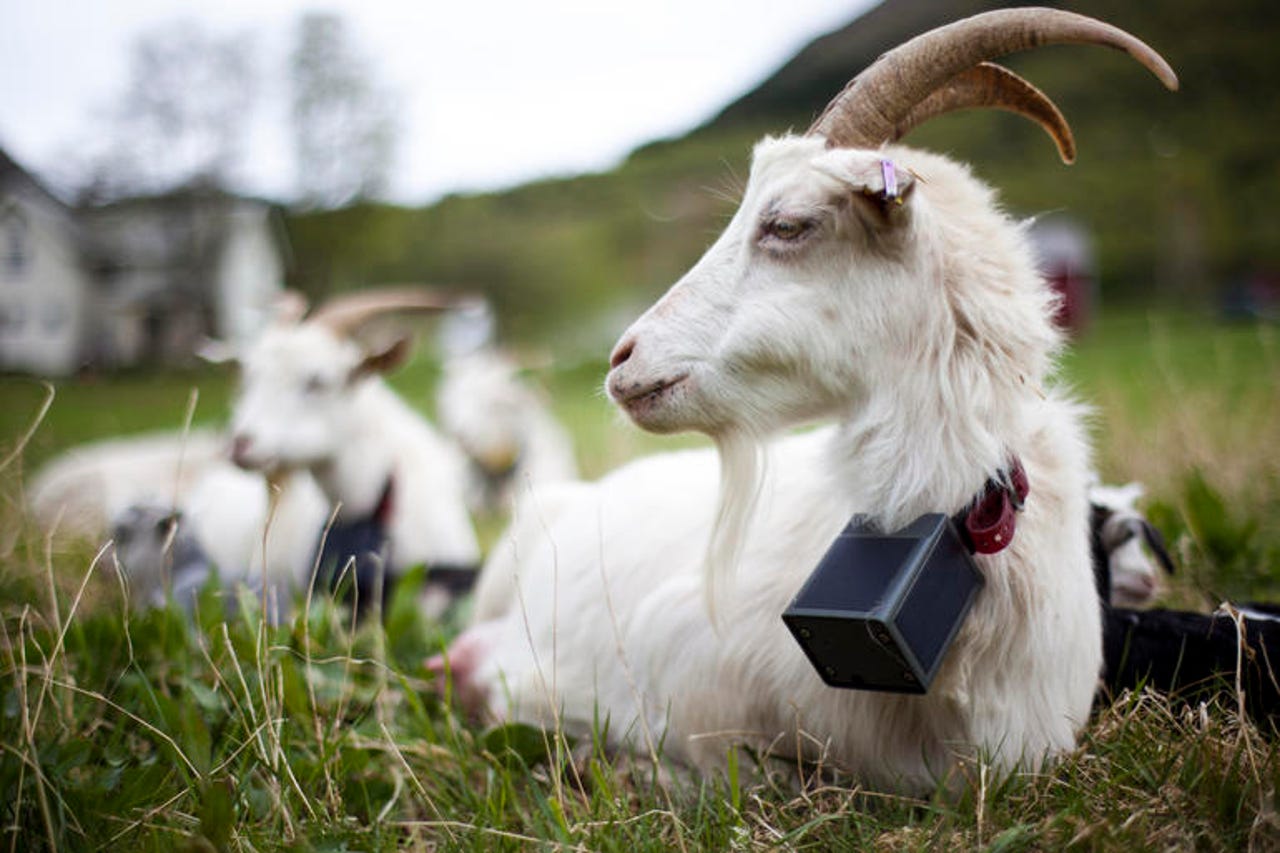How mobile comms, GPS, electric shocks can let these goats safely graze


The system can track animals and their activity, as well as perform behavioral analysis.
Norwegian company NoFence has developed a geofencing system for keeping livestock, such as sheep and goats, within a geographical area without physical fences.
Instead, animals wear a collar, containing built-in GPS, mobile networking, and solar-powered circuitry. The collars are designed as an alternative to fencing, particularly in remote terrain and in areas where enclosures are not viable or too costly to maintain.
When the animals approach the preset borders of their pasture, the collar warns them back by emitting increasing sounds and vibrations, until, as a last resort, it delivers a low-current electric shock to turn them back.
NoFence has developed a companion webpage and mobile app for the collar, where the farmer can set up the virtual fence on a map, as well as monitor active collars.
The setup containing the virtual fencing is transferred to the collars wirelessly, and each collar becomes active as soon as it finds itself within the pasture borders.
In addition to the geofencing, the collars can alert the farmer if an animal is stuck or has managed to lose its collar, and the farmer can also track the animals and their activity.
The system can also perform behavioral analysis and give a farmer warnings when there are indications of disease, injury, or predators in the vicinity.
The NoFence product has been in pilot-testing in Norway for a couple of years, and was planned for general launch in 2016. However, the use of electric shocks in the training of the grazing animals has raised concerns about animal welfare.
The Norwegian Food Safety Authority has stopped the further use of the collars, because NoFence hasn't been able to satisfy it that the collars are compatible with animal welfare.
On the other hand, Norway's Ministry of Agriculture and Food has stated that it believes this new technology merits further testing, and has asked the Food Safety Authority to facilitate this.
"Animal welfare has a high priority. The use of rangeland grazing is positive both for the animals and the farming industry, so the necessary testing of this technology should be completed," the minister said in a statement.
The farmer can set up the virtual fence on a map and monitor active collars on a smartphone.
Read more about technology in Scandinavia
- Time to rip up the notepad? reMarkable's tablet aims to mimic real paper and ink
- Internet of Trash: The printable electronics you can just throw away
- Poor smartphone signal, battery life? This breakthrough antenna could be the answer
- Vivaldi's email client, sync: How its browser team is working on key new features